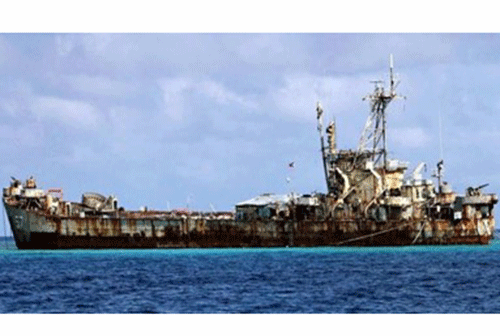In recent days, the Philippines have been delivering supplies to its ship “stranded” at Ren’ai Jiao in the South China Sea.
The Philippines’ activities in the South China Sea closely correlate with the security situation in the region, according to a monitoring report jointly released by CMG Voice of the South China Sea and Jinan University.
Back in 2023, the Philippines and the United States established a new military base in the Philippines, which was dominated by the United States. What’s worse, countries outside the region sent tens of thousands of military personnel to the South China Sea and conducted more than 20 military exercises or “freedom of navigation operations.”
The two incidents unfolded in a similar fashion, with Philippine supply ships entering waters near China’s Ren’ai Jiao, where clashes between China and the Philippines have become an international flashpoint.
The conflict between China and the Philippines in the South China Sea can be traced back to the 1970s, when the Philippines started illegally occupying part of the Nansha Qundao (also known as Nansha Islands). In 1999, a Philippine tank landing ship was deliberately “stranded” at Ren’ai Jiao. Since 2023, the Philippines has increased its supply to the “stranded” ship, and the “water cannon” incident has further triggered international debate.
China always regards this as a serious violation of its national sovereignty. All along, out of humanitarian considerations, the Chinese side has allowed the Philippine side to provide supplies to the people onboard the “stranded” ship, deliver necessary materials to them and ensure their basic living conditions.
But since 2023, the Philippines has stepped up efforts to resupply the “stranded” ship. In addition to essential supplies, the supply ships involved have also carried construction materials for entrenching their permanent presence.
In order to prevent the Philippines from supplying construction materials onto the tank landing ship that is “stranded” at Ren’ai Jiao, the Chinese Coast Guard, after repeated verbal warnings, used high-pressure water cannons to stop the Philippine supply ship, during which there were no casualties.
However, the Philippines distorted the story, and China found itself surrounded by negative international news in its public discourse about the South China Sea incident.
The Philippine side and its public have shown concern for the safety of its people, and there are also different opinions within its government on its China policy.
In the face of the Ren’ai Jiao question, on the one hand, because of the dilapidated status of the “stranded” ship, the Philippine side has always maintained a silent attitude towards the grounding of the ship, on the other hand, the current government has also denied its promise to tow away the illegally “stranded” ship.
In response to the Philippines’ “ambiguous” attitude on the Ren’ai Jiao question, the spokesperson of the Chinese Foreign Ministry said that the cause of the recent maritime situation is that the Philippines has frequently taken provocative actions in the South China Sea, infringing on China’s territorial sovereignty and maritime rights and interests. China has taken necessary measures to safeguard its sovereignty and rights and interests in accordance with the law. There is no such thing as China harassing Philippine ships.
– Nampa/Xinhua


